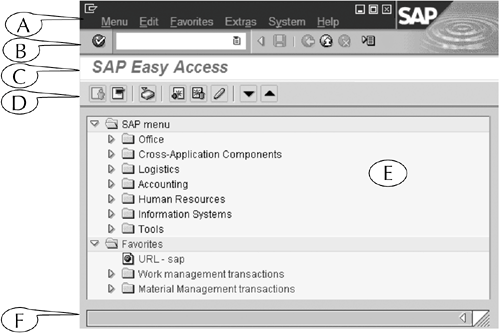Introduction: Design and Operation of the SAP Application Window
We begin this book with a visual tour of the SAP application window[1] and a discussion of the design and operation of its screen elements.
When you launch SAP, a session or an application window appears on your computer desktop with a display of a scene or screen inside its frame. This screen changes in its appearance and function as you progress through the SAP workflow from the SAP Easy Access screen (the default "home page" of the system) to the initial screen of a transaction (where you set up and execute it) and finally to the output for that transaction. Regardless of their function, however, seven features or elements are found on every screen of the SAP application window (Figure I.1):
Figure I.1. The SAP Easy Access screen contains all the elements found on other screens in the system. This lesson describes the design and operation of these screen elementsall of which should be familiar to the reader, by the way, as they can also be found in the application windows of many common desktop software applications, such as MS Word and Excel. We use the SAP Easy Access screen as the principal source of our screen images in this introduction because it contains all these screen elements and should be familiar to even the novice users of the system, but we also present images from other SAP screens to bring some variety to this discussion. Incidentally, this introduction focuses on the design and operation of the SAP application window as it appears in the desktop GUI. However, some end users access SAP through Web browsers such as MS Internet Explorer, where the SAP application window is condensed into a simpler format. We describe and illustrate this condensed design at the end of this introduction. |
EAN: 2147483647
Pages: 132